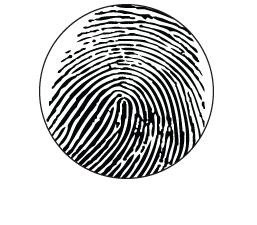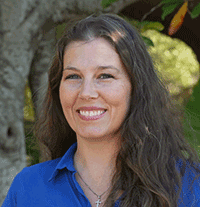Discipline Overview:
The Latent Print Development Science and Practice Subcommittee highlights and supports new and improved methods for the development of latent prints on items of evidence, while also recommending best practices in the field. Scientists in the discipline of latent print development encounter a variety of evidence for latent print processing. Typically, these evidentiary items are broken down into two categories: porous and non-porous. Porous evidence are items that absorb latent print residue, thus keeping the latent print safer from destruction. These items are generally made of paper and can include money, checks, receipt paper, cardboard etc. Non-porous evidentiary items do not absorb latent print residue, meaning that the latent print sits on the surface of the item making the latent prints more vulnerable to destruction. Non-porous items can include glass, plastic, metal, varnished wood etc. Other things to consider when determining how to process an item for latent prints include whether the item is: bloody or non-bloody, wet or dry, smooth or textured, or light-colored or dark-colored. There are several different types of equipment that can be used in developing, viewing, and capturing patent and latent prints on items of evidence. The processor will determine the best sequence of methods for latent print development based on the surface of the evidentiary item and any additional analyses needed on the item.

Latent Print Development Subcommittee Chair
Karly Ridgell, LA, USA
Committee MembersReturn to Forensic Disciplines
Qualifications:
The qualifications required to become an expert in Latent Print Development can vary significantly depending on the agency and jurisdiction. However, there are some general skills and recommendations that apply regardless of location.
Many employers seek candidates with a bachelor’s degree, preferably in a scientific field. Given that latent print development involves the preparation and use of chemical reagents, as well as a solid understanding of laboratory safety practices, it is advisable to take chemistry courses that include laboratory components during your educational journey. Additionally, staying abreast of the latest research in latent print development is crucial. Peer-reviewed journals such as the Journal of Forensic Identification, published by the International Association for Identification (IAI), offer valuable insights into new processing techniques and technologies. Participating in hands-on training courses and workshops where you can apply your knowledge in a practical setting is also highly beneficial for honing your expertise. There are numerous reputable training providers, as well as opportunities through local IAI divisions and the annual IAI conference.
Lastly, obtaining certification further enhances your credibility as an expert in your field. The choice of which certification to pursue should be based on your specific role within your organization. While there is currently no standalone certification for Latent Print Development, it is encompassed within the Latent Print Examiner certification offered by the IAI. This certification is particularly valuable for individuals who engage in latent print comparisons alongside evidence processing. On the other hand, the Crime Scene Certification program offered by the IAI would be the most suitable option for those whose main responsibilities involve responding to crime scenes.
Given the variations in qualification requirements across different regions, it is advisable to conduct thorough research on the specific criteria in your area.
Certification:
Currently there is no IAI Certification available for this discipline.
Standards:
OSAC and ASB (and formerly SWGFAST) are the Standards Developing Organizations (SDO) that produce many of the standards for forensic science service providers (FSSP) in the U.S. These documents contain minimum requirements, best practices, standard protocols, terminology, or other information to promote valid, reliable, and reproducible forensic results; however, these standards are not mandatory. International Organization for Standardization (ISO) standards are produced by a worldwide group of experts in numerous different disciplines. ISO 17025 and 17020 are the two standards that primarily apply to FSSP’s; these set the general requirements for testing, quality management, validity of results, and other aspects of work. For providers that choose to apply for accreditation under one or both of these standards, meeting all of the applicable requirements in them is mandatory.
- OSAC standards— https://www.nist.gov/osac/registry?k=&sdo%5B%5D=791886#top
- ASB standards— https://www.aafs.org/academy-standards-board
- ISO standards—https://www.iso.org/standards.html
Resources:
For more information about Latent Print Development see below:
Texts:
- The Science of Fingerprints, FBI publication
- UK Home Office Manual of Fingerprint Development
- The Fingerprint Sourcebook, National Institute of Justice, 2012.
Informational Websites:
- 1. The Detail. Kasey Wertheim <theweeklydetail@topica.email-publisher.com
- 2. Onin.com
- 3. Best Practices for Documenting Image Enhancement, SWGIT https://www.swgit.org
- 4. CBDIAI Processing Guide
- 5. European Network of Forensic Science Institutes website—https://enfsi.eu/
- 6. Processing Guide for Developing Latent Prints, FBI publication
Journals that Publish Latent Print Development Articles:
- Journal of Forensic Identification, Official Publication of the International Association for Identification. Bimonthly Publication.
- Journal of Forensic Sciences. Official Publication of the American Academy of Forensic Sciences. Bimonthly Publication.
- Forensic Science International
Other Organizations Relevant to this Discipline:
- IAI local divisions
- AAFS and associated local divisions (MAFS, SWAFS, etc)
- OSAC/SWGFAST
Ideas for More Research Projects:
- CSAFE
- RTI
- LEAP (university/practitioner collaboration through ASCLD)
Information about proper collection of this evidence:
- Agency-specific quality, procedure, and training manuals
- Training courses specific to print processing and development
- OSAC Standard for on-scene collection and preservation of physical evidence—
